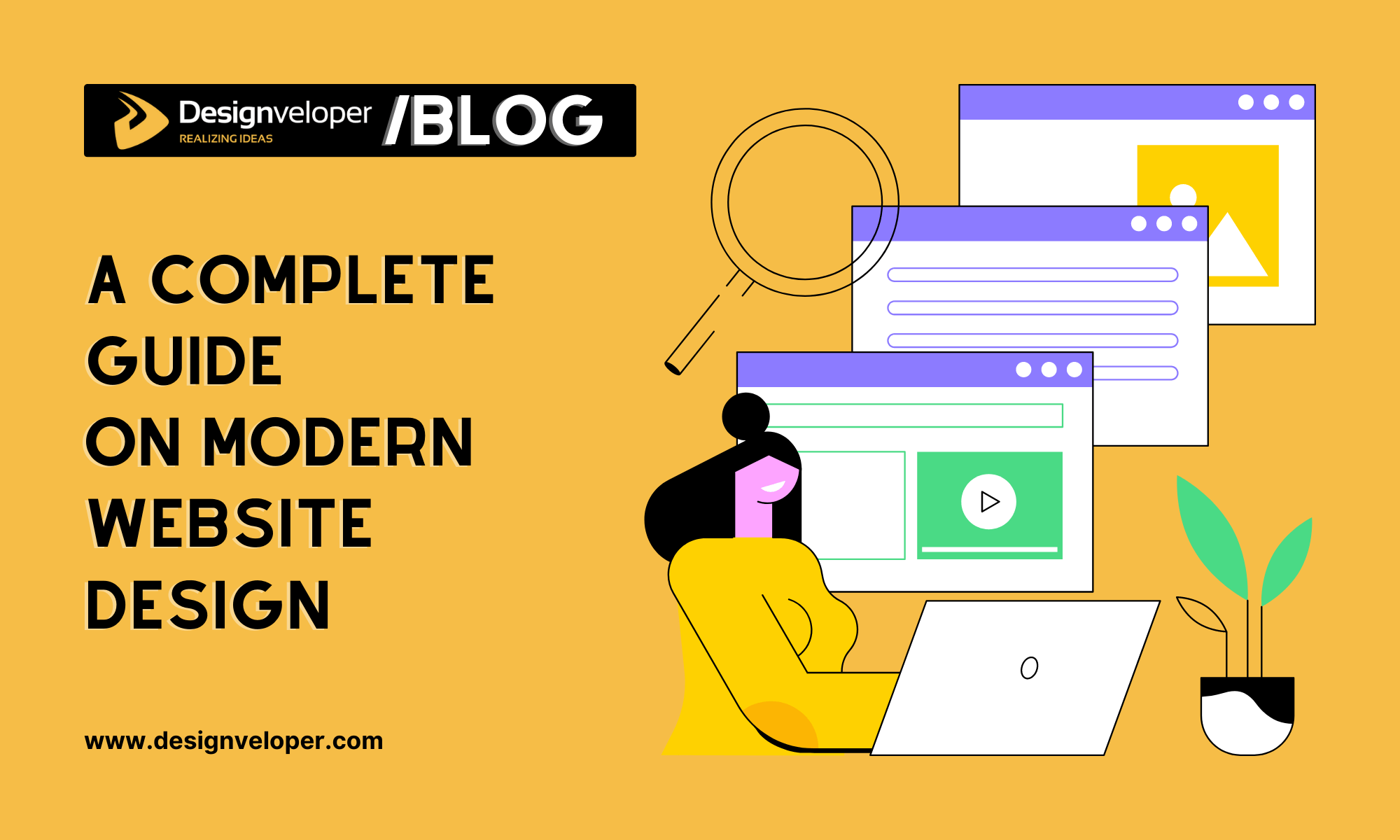Why Website Design Matters for Building a Strong Online Brand
Why Website Design Matters for Building a Strong Online Brand
Blog Article
Modern Web Site Style That Catches Attention and Transforms
In a significantly digital landscape, modern internet site style has emerged as a critical consider catching user focus and driving conversions. By purposefully utilizing visual power structure, responsive formats, and involving interactive components, designers can develop experiences that not just bring in visitors yet likewise help with meaningful communications. Reliable call-to-action methods play an essential function in guiding users towards wanted outcomes. As we check out these essential elements, it ends up being clear that understanding their interaction can significantly impact an internet site's performance and individual satisfaction. What are the crucial elements that truly make a difference?
Significance of Visual Power Structure
Aesthetic hierarchy is an important element in website design, as it overviews users' interest and boosts their general experience. By tactically organizing material, developers can direct individuals to the most important details first, thus boosting engagement and improving usability.
Incorporating a sensible circulation in web content setup is crucial; for example, positioning the most essential information on top of a web page cultivates instant recognition. Moreover, constant use typography, such as varying font dimensions and designs, helps develop a clear web content structure. This organization not only help in navigating yet additionally builds depend on, as customers really feel a lot more comfy when they can easily discover what they are trying to find.
Eventually, a well-executed visual power structure not just enhances aesthetic appeal yet likewise substantially influences customer actions. By focusing on essential elements and guaranteeing a seamless experience, designers can efficiently transform site visitors right into clients, strengthening the value of this fundamental style principle in contemporary website development.
Responsive Design for All Gadgets
Producing a seamless experience across various gadgets is necessary in today's electronic landscape, where individuals gain access to sites from tablet computers, smart devices, and desktop computers alike. Receptive layout is a critical technique that makes certain internet sites adjust fluidly to different display resolutions, alignments, and dimensions. By employing adaptable grids, pictures, and CSS media queries, developers can produce layouts that keep visual integrity and capability, no matter the tool being made use of.
The value of responsive style extends past aesthetics; it straight influences individual involvement and conversion prices. A site that works well on all gadgets motivates longer visits and minimizes bounce rates, as customers are a lot more likely to connect with web content that is easy to navigate. Moreover, search engines, particularly Google, prioritize mobile-friendly sites in their rankings, making receptive style an important element of search engine optimization (SEARCH ENGINE OPTIMIZATION)
Incorporating responsive style not just boosts user experience however also improves the growth process. By developing a solitary site that functions across gadgets, businesses can save time and resources compared to creating separate mobile and desktop versions. Ultimately, responsive design is an essential method for modern-day site design, guaranteeing ease of access and fulfillment for all customers, despite their gadget.
Involving Interactive Aspects
While a receptive design prepares for a practical website, integrating engaging interactive components is important for catching get more user focus and cultivating deeper links. Website Design. Interactive aspects, such as computer animations, tests, and clickable infographics, produce an extra dynamic user experience, encouraging site visitors to spend more time on the site
Incorporating interactive features can also guide users via complex information, making it less complicated to digest web content. Interactive sliders can highlight product variations, while embedded video clips can offer demonstrations or reviews that resonate more than fixed photos or text. Gamification techniques, like rewards for involving or completing jobs with content, can improve user inspiration and retention.
Effective use of interactive aspects not only enriches the customer experience but can also lead to greater conversion prices. It is essential to stabilize interactivity with efficiency; excessively intricate attributes might hinder website rate, adversely influencing customer satisfaction.
Streamlined Navigating Practices
Efficient navigation is a foundation of any type of effective internet site, as it directly influences customer experience and material ease of access. Structured navigating methods make certain that customers can quickly find information, boosting their communication with the site. A well-structured navigating menu should be basic and user-friendly, generally featuring a limited number of primary categories to prevent overwhelming site visitors.
To attain structured navigating, developers must prioritize a hierarchical framework that rationally arranges content. Implementing breadcrumb tracks can provide customers with context regarding their existing area within the site, allowing for smooth backtracking. Additionally, making use of drop-down food selections can effectively conserve room while still supplying accessibility to subcategories.
Receptive style is essential, as navigation must be functional across all tools (Website Design). Mobile individuals, in specific, advantage from touch-friendly food selections and retractable sections that maintain usability without jeopardizing aesthetic appeals

Efficient Call-to-Action Approaches
A well-crafted call-to-action (CTA) is crucial for leading individuals towards wanted end results on a web site, as it motivates them to engage with web content or make an acquisition. To optimize their efficiency, CTAs ought to be clear, engaging, my website and purposefully placed throughout the site.
First, utilize action-oriented language that connects seriousness or value, such as "Obtain Begun," "Join Now," or "Insurance claim Your Discount." This language not only encourages users however likewise sets clear expectations concerning the following steps.
2nd, consider design components; CTAs should stand out visually via contrasting colors, adequate whitespace, and popular positioning. A button that is simple to see and click increases the probability of user communication.
Furthermore, customizing CTAs based upon customer habits or demographics can dramatically improve interaction. Tailored messages reverberate extra with users, driving official source greater conversion prices.

Verdict
To conclude, modern-day internet site layout highlights the combination of visual hierarchy, receptive layouts, involving interactive aspects, streamlined navigating, and efficient call-to-action strategies. These elements collectively boost user experience, making certain that visitors stay involved and encouraged to explore material additionally. By prioritizing these design concepts, services can substantially enhance user retention and conversion prices, ultimately bring about higher success in the digital landscape. The continuous advancement of internet layout emphasizes its essential function in reliable on-line interaction and marketing.
In a significantly digital landscape, contemporary internet site style has actually arised as a crucial element in recording user focus and driving conversions.Visual power structure is an important element in internet site design, as it guides users' interest and improves their overall experience.The value of receptive design extends beyond visual appeals; it straight influences user involvement and conversion prices.Incorporating responsive style not just enhances user experience however also streamlines the development procedure. Inevitably, responsive layout is an essential strategy for contemporary website style, making sure access and contentment for all users, no matter of their gadget.
Report this page